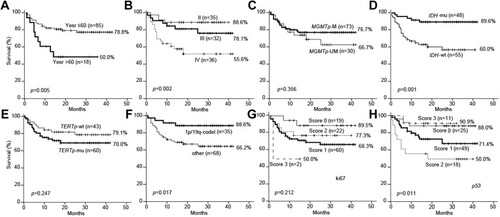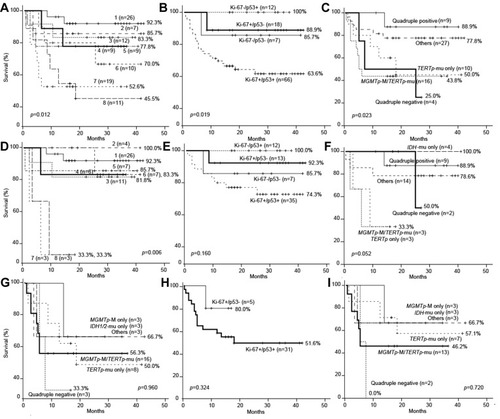Figures & data
Table 1 Correlations Between Clinicopathological Characteristics and Alterations on IDH1/2, MGMTp, TERTp, BRAF, and 1p/19q in 103 Human Gliomas
Table 2 Ki-67 and p53 Immunoreactivity in 103 Human Gliomas
Figure 1 Prognostic values of patient age, histological grade, MGMT promoter methylation, IDH mutation, TERT promoter mutation, 1p/19q codeletion, and Ki-67 and p53 expressions by Kaplan–Meier Estimates of Overall Survival in 103 gliomas.

Table 3 Clinicopathological and Biological Factors Affecting Overall Survival Rates
Figure 2 Kaplan–Meier estimates of overall survival in the glioma molecular groups.

